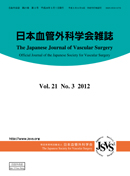Volume 20, Issue 6
Displaying 1-13 of 13 articles from this issue
- |<
- <
- 1
- >
- >|
-
2011Volume 20Issue 6 Pages 20_06_I-20_06_II
Published: October 25, 2011
Released on J-STAGE: October 21, 2011
Download PDF (330K)
-
2011Volume 20Issue 6 Pages 823-827
Published: October 25, 2011
Released on J-STAGE: October 21, 2011
Download PDF (225K)
-
2011Volume 20Issue 6 Pages 829-834
Published: October 25, 2011
Released on J-STAGE: October 21, 2011
Download PDF (317K) -
2011Volume 20Issue 6 Pages 835-838
Published: October 25, 2011
Released on J-STAGE: October 21, 2011
Download PDF (282K)
-
2011Volume 20Issue 6 Pages 839-843
Published: October 25, 2011
Released on J-STAGE: October 21, 2011
Download PDF (1019K)
-
2011Volume 20Issue 6 Pages 845-848
Published: October 25, 2011
Released on J-STAGE: October 21, 2011
Download PDF (732K) -
2011Volume 20Issue 6 Pages 849-853
Published: October 25, 2011
Released on J-STAGE: October 21, 2011
Download PDF (570K) -
2011Volume 20Issue 6 Pages 855-859
Published: October 25, 2011
Released on J-STAGE: October 21, 2011
Download PDF (1321K) -
2011Volume 20Issue 6 Pages 861-865
Published: October 25, 2011
Released on J-STAGE: October 21, 2011
Download PDF (523K) -
2011Volume 20Issue 6 Pages 867-871
Published: October 25, 2011
Released on J-STAGE: October 21, 2011
Download PDF (932K) -
2011Volume 20Issue 6 Pages 873-877
Published: October 25, 2011
Released on J-STAGE: October 21, 2011
Download PDF (1032K) -
Pancreaticoduodenal Artery Aneurysm Associated with Celiac Axis Stenosis Treated by Combined Therapy2011Volume 20Issue 6 Pages 879-883
Published: October 25, 2011
Released on J-STAGE: October 21, 2011
Download PDF (962K) -
2011Volume 20Issue 6 Pages 885-890
Published: October 25, 2011
Released on J-STAGE: October 21, 2011
Download PDF (1219K)
- |<
- <
- 1
- >
- >|
